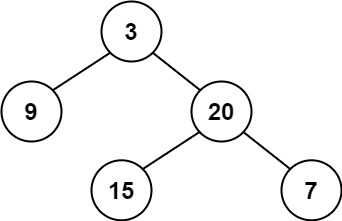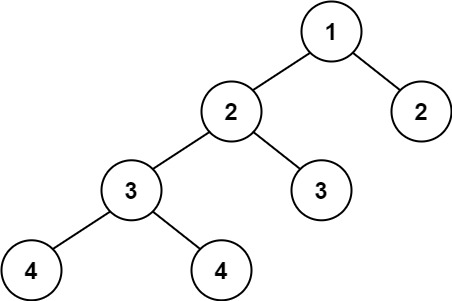LeetCode in Kotlin
110. Balanced Binary Tree
Easy
Given a binary tree, determine if it is height-balanced.
For this problem, a height-balanced binary tree is defined as:
a binary tree in which the left and right subtrees of every node differ in height by no more than 1.
Example 1:

Input: root = [3,9,20,null,null,15,7]
Output: true
Example 2:

Input: root = [1,2,2,3,3,null,null,4,4]
Output: false
Example 3:
Input: root = []
Output: true
Constraints:
- The number of nodes in the tree is in the range
[0, 5000]. -104 <= Node.val <= 104
Solution
import com_github_leetcode.TreeNode
/*
* Example:
* var ti = TreeNode(5)
* var v = ti.`val`
* Definition for a binary tree node.
* class TreeNode(var `val`: Int) {
* var left: TreeNode? = null
* var right: TreeNode? = null
* }
*/
class Solution {
fun isBalanced(root: TreeNode?): Boolean {
// Empty Tree is balanced
if (root == null) {
return true
}
// Get max height of subtree child
// Get max height of subtree child
// compare height difference (cannot be more than 1)
var leftHeight = 0
var rightHeight = 0
if (root.left != null) {
leftHeight = getMaxHeight(root.left)
}
if (root.right != null) {
rightHeight = getMaxHeight(root.right)
}
val heightDiff = Math.abs(leftHeight - rightHeight)
// if passes height check
// - Check if left subtree is balanced and if the right subtree is balanced
// - If one of both are imbalanced, then the tree is imbalanced
return heightDiff <= 1 && isBalanced(root.left) && isBalanced(root.right)
}
private fun getMaxHeight(root: TreeNode?): Int {
if (root == null) {
return 0
}
var leftHeight = 0
var rightHeight = 0
// Left
if (root.left != null) {
leftHeight = getMaxHeight(root.left)
}
// Right
if (root.right != null) {
rightHeight = getMaxHeight(root.right)
}
return if (leftHeight > rightHeight) {
1 + leftHeight
} else {
1 + rightHeight
}
}
}

